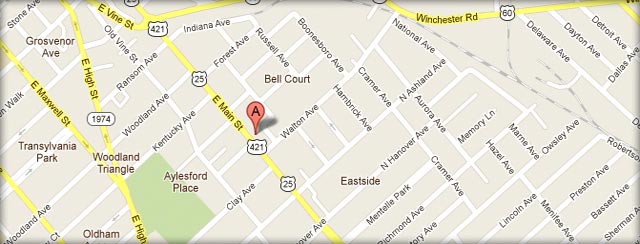- ATV accidents
- Brain Injuries
- Bus Accident
- Car Accidents
- Construction Accident
- Distracted Driving
- Drugged Driving Accident
- DUI
- Firm News
- Mass Tort
- Medical Malpractice
- Motorcycle Accidents
- Pedestrian Accidents
- Personal Injury
- Product Liability
- Safety
- Social Security Disability
- Truck Accidents
- Vehicle Accidents
- Workers Compensation
- Workplace Injuries

April is National Distracted Driving Awareness Month. To support the effort, Kentucky is offering its 3.6 million licensed drivers and residents a free, one-year subscription to TextLimit.com, a smartphone app that restricts users from performing certain actions while the vehicle is in motion.
Kentucky transportation officials tested the TextLimit app thoroughly and concluded it was safe and reliable to use, said Bill Bell, executive director of Gov. Beshear’s Transportation Cabinet, in a press release.
Motorists who want to download the app should visit www.textlimit.com and enter the coupon code NOTEXTKY.
All Kentucky motorists should take advantage of this no-cost strategy for driving safely. According to the National Highway Traffic Safety Administration, an estimated 3,328 people were killed and another 421,000 injured in distraction-related car crashes in 2012. NHTSA statistics show that 10 percent of fatal crashes, 18 percent of crashes causing injuries and 16 percent of all motor vehicle accidents in 2012 involved some form of distraction.
What is Distracted Driving?
When people hear the phrase “distracted driving,” they immediately think about cell phone use and texting while driving. That’s good – mobile phones were reported as distractions in 378 fatal car accidents in 2012, according to the NHTSA. However, people shouldn’t forget that there are plenty of other ways that drivers can get distracted while driving, such as by eating, fiddling with the radio, talking with other passengers, adjusting the climate controls or programming their GPS devices.
While we may pride ourselves on our ability to multitask, we shouldn’t get cocky when it comes to multitasking behind the wheel. Distracted driving falls into three categories:
- Visual: Looking at your navigation system, iPod or anything other than the road while you’re driving constitutes a visual distraction.
- Cognitive: These are the distractions that take your mind off the road, such as chatting with others in the car or mentally running through your “to-do” list while driving.
- Manual: Manual distractions include anything that requires a driver to take one or more hands off the wheel. That could include reaching back to give a child a dropped toy, opening a bottle of soda or swatting away a fly.
Because texting involves all three forms of distraction, it is considered by far the most dangerous activity to do while driving, according to the U.S. Department of Transportation.
Apps May Be Able To Help
Although technology is often blamed for causing distracted-driving accidents, it could also be part of the solution. Take a look around the next time you are in a busy area, such as a mall. How many heads do you see bent down looking at their smartphones? How many fingers are tapping away on the screens? It’s a safe bet that you’ll see a lot of people doing just that.
Psychologists are finding that cell phone use and texting are becoming addictions for millions of Americans. We all know that addictions are difficult to overcome, so it is naïve to believe that a simple “Don’t text and drive” warning will have any effect on the most zealous of users – even if they are driving. That’s where apps like TextLimit may be able to do some good. TextLimit works with a smartphone’s global-positioning software to detect the speed at which the vehicle is moving. When the car reaches a predetermined speed limit, the touch screen becomes inhibited and lessens the likelihood of a distracted-driving crash.
Although Kentucky is offering TextLimit free for one year, there are many other smartphone apps available to Apple and Android users who want to limit distractions while driving, such as AT&T DriveMode, Drive safe.ly, Key2SafeDriving, Safely Go, Safe Driving Text Machine, detext and TextArrest, among others. Each app has its own special mechanisms and features, so you should easily be able to find one that fits your needs.
If you don’t want to use apps or buy hands-free devices to prevent distracted driving, then take away the temptation and put your phone out of reach while driving. Either way, find a strategy that works best for you – and stick to it.

